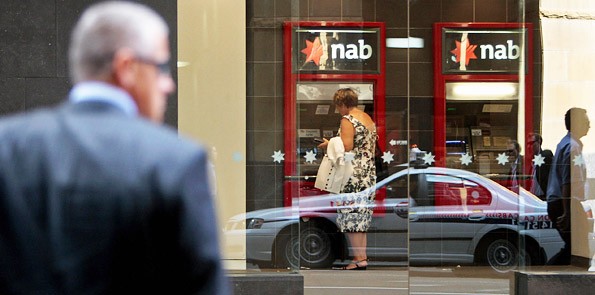
After deciding to keep interest rates on hold earlier this month, Reserve Bank governor Glenn Stevens made a point of saying that his board was looking hard at what comes after the mining boom, which is expected to peak next year, sooner and at a lower level than was expected.
“As this peak approaches, the board will be monitoring the strength of other components of demand,” Stevens said on November 6.
Stevens doesn’t seem the type to get overexcited about anything, but I can only hope that after seeing Tuesday’s monthly survey of business confidence and conditions from NAB, Stevens’ “monitoring” is starting to make him uneasy about what comes after the mining boom.
The more I look at the survey, the uglier it gets. The picture is of an small business sector hanging on for grim life as traditional conditions continue to worsen. And so far at least, no amount of rate cutting is having much of an impact at all.
The NAB survey shows business conditions have fallen to their weakest level in three years, driven down by declines in employment, profitability and trading conditions.
Manufacturing, construction and the wholesale sector — three industries pivotal to the non-mining economy — saw conditions deteriorate “heavily” while retail conditions are also very weak. Even conditions in the mining sector weakened, despite some improvements in commodity prices.
In terms of business confidence, pessimism reigns in the mining and construction sector — across the board really.
Not surprisingly, the key indicators of future demand are also parlous. Forward orders, capacity utilisation and capital expenditure are all well below long-term averages. NAB says just 28% of firms say they need credit, suggesting 72% of businesses have battened down the hatches and will not be taking big risks to invest in growth plans. And all this is happening in an economy where Glenn Stevens says “most indicators available for this meeting suggest that growth has been running close to trend over the past year”.
That might be true when you look at the economy as a whole, but the mining sector is masking a world of pain. It’s bloody tough for the average small and medium business out there and right now it is frankly impossible to see which industries — or “components of demand” in Stevens-speak — can step up to drive economic growth as the mining boom ends.
The problem, of course, is what to do about it. Rate cuts are the obvious answer, but they appear to be having very little impact on business conditions or confidence at present, with concerns about the high Australian dollar, the global economy and consumer spending clearly outweighing any stimulatory benefits.
But I don’t think Glenn Stevens has any choice. While the RBA has expressed some slight concerns about inflation, the NAB survey suggest wages and prices are pretty well contained.
The RBA needs to cut again, and the sooner the better. And while there are lots of economists who will say there are no need for rates to be at emergency levels, it’s hard to think of a better description of the picture the NAB survey provides.
*This article was originally published at SmartCompany







Thanks Tony Abbott. It looks like you have finally wrecked the joint.